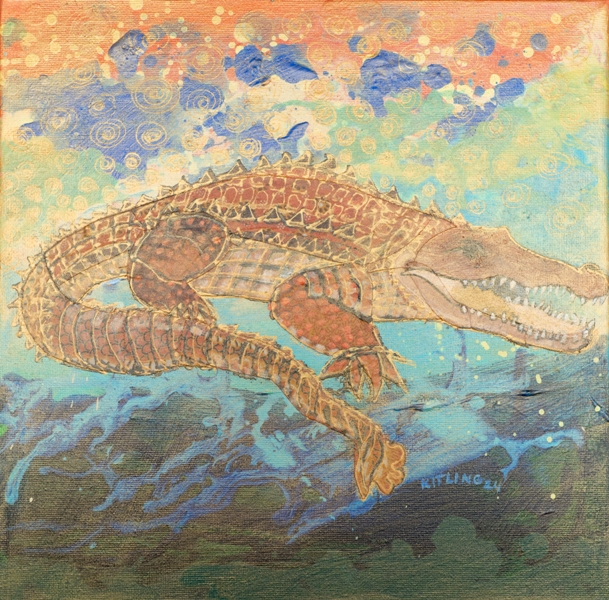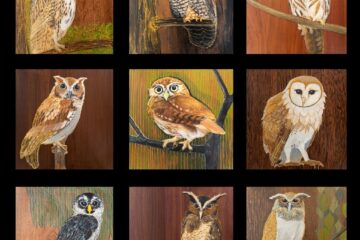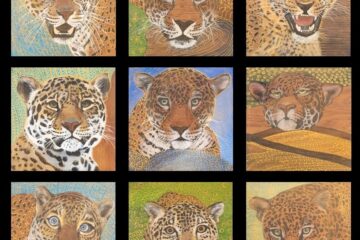THE MYTH OF ELDORADO
THE CROCODILE AS A MYTHICAL CREATURE
Before you read this blog, be welcome to read the following blogs first:
* The Myth of El Dorado – Introduction
* The Myth of El Dorado – In search of another gold
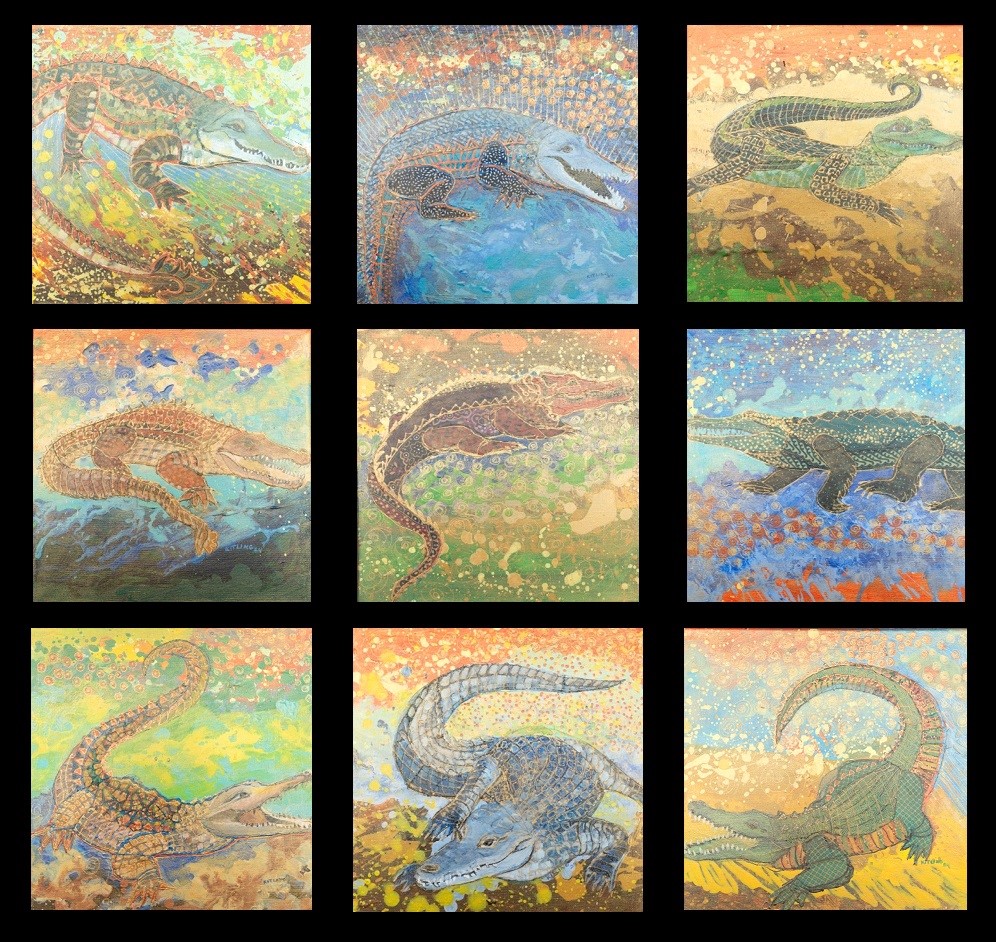
A Surinamese Caiman
A little over 40 years ago, we came to live at Leonsberg. The street was a dirt road and stopped at a wooden walkway over the drainage ditch that separated plantation Leonsberg from plantation Clevia. We lived next to the drainage ditch. Until at least 35 years ago, we had no fence, and behind our house was a secondary forest with mainly Parwa trees. Plantation Leonsberg had been a coffee plantation. The plantation structure was still clearly visible with all the large planting beds and a network of small ditches. If you walked through part of the forest, you ended up at the tennis court of the then Hotel Riverclub. On Sundays, our house became a cozy retreat for tennis and music friends and their children. On one such Sunday, the older children came running excitedly. “There is a caiman in the ditch. We want to catch him.” The caiman was caught with the bone of a chicken drumstick and a noose. He was then slaughtered and expertly felted by Rudi and Jan.
“Uncle Jan, where is the caiman? Oh, you turned it into masala chicken!”
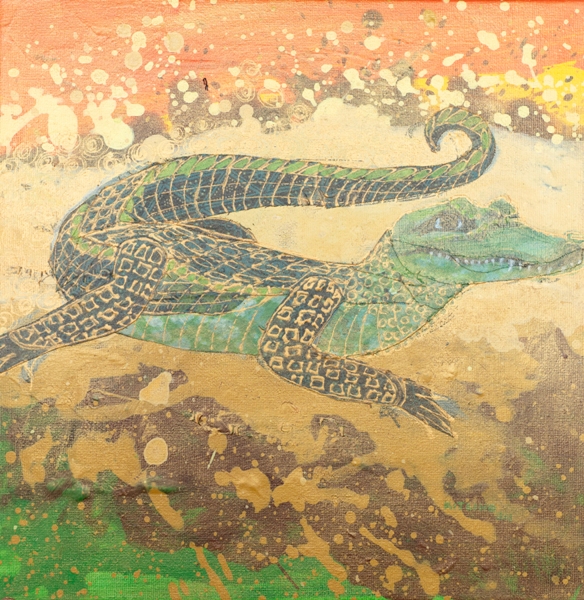
Crocodile, Alligator or Caiman
Very often Crocodiles, Alligators, and Caimans get mixed up. This is not very surprising, because they look alike and are known as Crocodilians. They have a common ancestor who already lived on earth a few hundred million years ago. Their evolution was also very slow, so today’s Crocodilians do not seem to differ much from the prehistoric primal animal. But what exactly is the difference? According to the Scientific classification, the crocodile, alligator, and caiman all belong to the class of Reptiles and the order of Crocodilia. The crocodile belongs to the Crocodylideae family, while the alligator and caiman belong to the Alligatoridae family. The alligator belongs to the subfamily Alligatorinae and the caiman belongs to the subfamily Caimaninae. The split of Caimans and Alligators within the evolution happened somewhere around 40 and 60 million years ago. Personally, I thought crocodiles were all very big, then alligators would come next, and caimans were the smallest. In general, that is the case, but I have now discovered that you also have small crocodiles and large caimans. For example: The American alligator can grow to an average of 4 meters in length, while 1.5 meters is the average length of the Chinese alligator. The African dwarf crocodile rarely grows larger than 2 meters in length and the black caiman can grow 3 to 6 meters in length.

Various species of Crocodilians exist in South and Central America and the Caribbean. These species are distributed in their specific areas. Suriname only has caimans and only 3 species have been identified. The Common Caiman (Dutch: Brilkaaiman; Sranan Tongo: Wetbere Kaiman), The Black Caiman (Dutch: Zwarte Kaaiman; Sranan Tongo: Blaka Kaiman) and the Dwarf Caiman (Dutch: Dwerg Kaaiman; Sranan Tongo: Redi Kaiman).
Note: Crocodiles and dinosaurs are not directly related. However, they do share an ancient family member from a group called archosaurs.
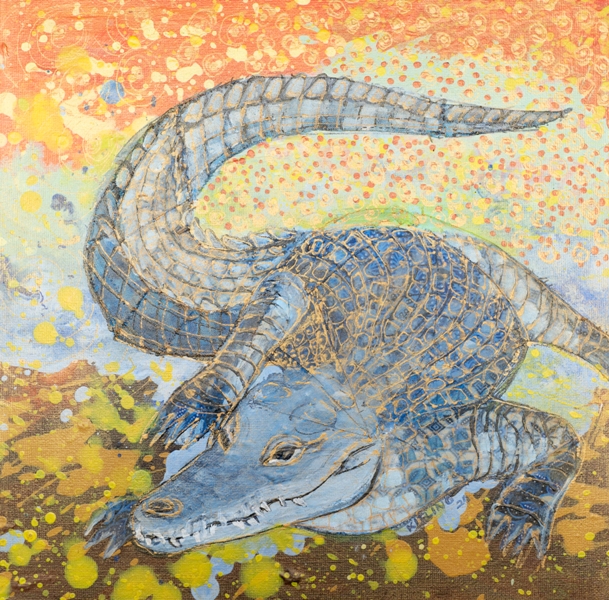
Why were the Crocodilians chosen for the project of The Myth of El Dorado?
The Crocodilians are very significant to the indigenous people of Mesoamerica and South America. The iguana also holds an important place in some regions and is sometimes mentioned in the same breath as the Crocodilians. I found the following on the Internet: ‘The name “alligator” is likely an anglicized form of ‘el lagarto’, the Spanish term for the lizard, which early Spanish explorers and settlers in Florida called the alligator. The interrelationship between the iguana and the Crocodilians is, therefore, quite remarkable in the perception of people, even though these animals only have in common that they belong to the class of Reptiles. Crocodiles are found all over the world. In this blog, I have chosen to stay within the Myth of El Dorado and, therefore, the focus is on the Crocodilians that live in the region of the Americas.
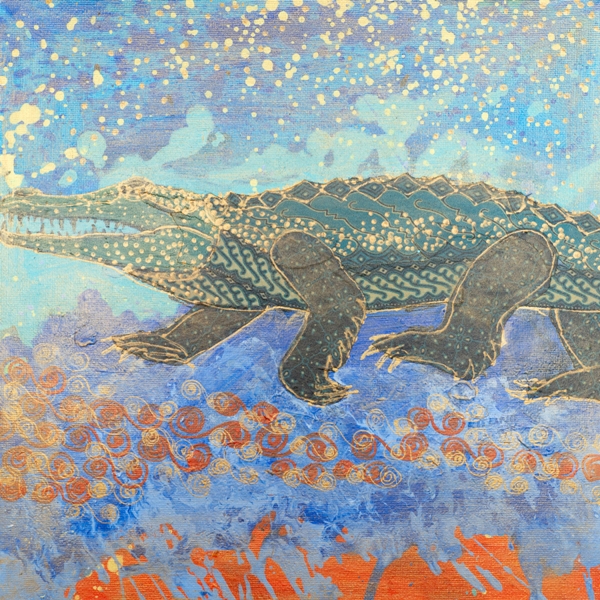
Endangered specie
Several different Crocodilians, mainly crocodiles and alligators, are listed as critically endangered. There are several reasons for this. Firstly, two major aspects threaten the crocodilians’ survival:
- The meat of the crocodilians has always been very popular. A piece of crocodile meat is internationally regarded as a special, exotic, and nutritious delicacy, but locals also love the tasty meat of a Crocodilian.
- In ancient Mesoamerica, the skin of the crocodile was already used for clothing for gods, rulers, warriors, and priests. In the Western world, crocodile leather became increasingly popular around the 1800s.
The meat, and especially the skin, became so popular that crocodile and alligator farms were established. These farms have helped ensure that certain species of Crocodilians have not been exterminated.
In the meantime, a few world-famous fashion brands have abolished the use of leather from Crocodilians. Nevertheless, it is still a multi-million-dollar business.
The Crocodilians have also found a place in the tourism industry, given the many crocodile and alligator tours available. In Suriname, caiman spotting is often part of the program of a local tour. The existence of the Crocodilians, therefore, has the attention of many people. Unfortunately, there are still quite some other threats to the conservation of Crocodilians, for example:
– loss of habitat due to human actions;
– fishermen who kill the dangerous animal out of fear;
– change in the natural environment causing a shortage of food, or an invasion of another species that likes small Crocodilians for a meal.
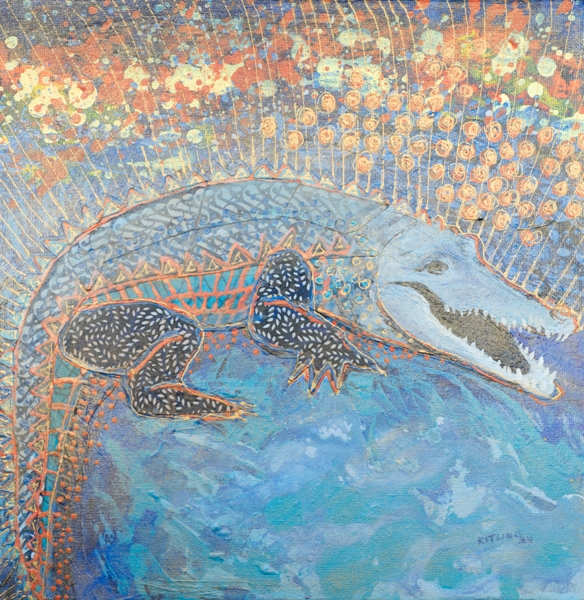
Crocodile as spiritual animal
Crocodiles were an integral part of pre–Columbian Maya civilization. In Mayan art, animals are quite often fused with other animals and, in the case of crocodiles, the back of the crocodile resembles the trunk of a ceiba tree (Dutch: Kapokboom; Sranan Tongo: Kankantri) with thorns. The ceiba was the most sacred tree for the ancient Mayas and a symbol of the universe providing a link between the sky, earth, and underworld. Crocodiles then appear as the base of this “world tree”. Furthermore, for being a primordial creature, survival and strength are generally seen as dominant features of the crocodile. In my attempts to learn more about the crocodile in Mesoamerican mythology, the first aspect I encountered was that Crocodilians were associated with fertility and rebirth. They were responsible for the timely arrival of the rains and fertility of the soil. They were associated with the Mayan elite and the god Itzamná.
An interesting discovery I made was that some masks that earlier had been identified as jaguars, begun to be identified as crocodiles. It seems that, gradually, the crocodile is getting its true place in the pre-Hispanic cosmovision, being an important animal just like the eagle or the jaguar.
However, it has been Itzamná who appeared as most intriguing to me. Itzamná is an incredibly complex Mayan god. Although little has been recorded about him, archaeologists have uncovered numerous images of Itzamná in several architectural, sculptural, and artistic settings. Itzamná is depicted in various ways, including both human and animal forms. He could appear as four gods. At least two of them are connected to the creation of the earth. Itzamná was often depicted as a wise old man, but also as part human and part crocodile. He is considered a companion god who helped the Mayans to create their calendar system and develop their astrology, and science in medicine. He is known as a god of wisdom and knowledge. Thus, the crocodile spirit animal is bestowed with many features but, in general, it symbolizes survival, strength, and fertility. Furthermore, wisdom. Maybe because of its relation to Itzamná. Itzamná married the goddess Ixchel, the Mayan goddess of the moon, love, and pregnancy; two of their children acted as creator gods just like their father, or maybe they were other manifestations of their father.
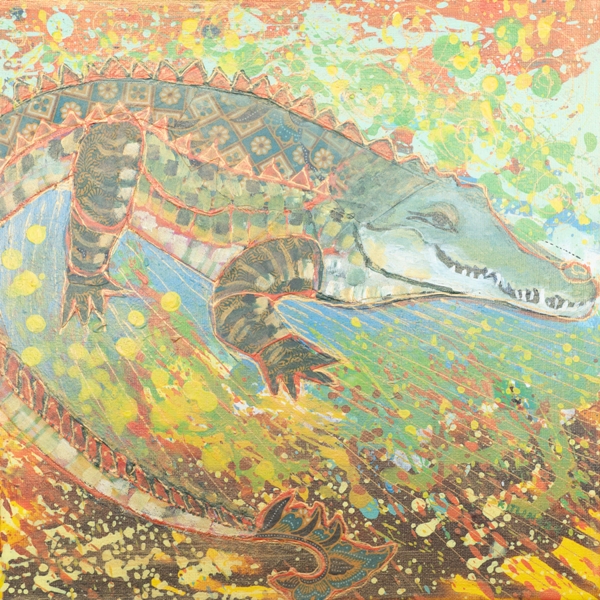
Creation of the earth
In Mayan and Aztec mythology, the creation of the earth is associated with the crocodile. There are many versions of one specific legend about the creation of the earth. Here, I tell my own version by using parts of legends already told.
In the legend, the gods were not fond of the liquid world in primordial times, so the gods Tezcatlipoca and Quetzalcoatl wanted to create a world that would be inhabited. However, there was a terrible primordial sea monster Cipactli, half crocodile, part fish, and toad or frog, with an indeterminate gender. Cipactli had an insatiable hunger and threatened to devour all the gods’ creations. The monster had a mouth on each joint, which also ensured that consumption was rapid. It was not easy, but eventually, Tezcatlipoca and Quetzalcoatl managed to capture Cipatli. These two gods pulled Cipactli’s body in the four directions and, thus, freed the universe from its body. They used the remaining body to create the world according to their ideas. The heavens were created from the head, the earth from the middle part, the tail became the underworld and his legs four rain gods. Nevertheless, Cipactli was still alive, and the gods promised him or her regular blood sacrifices. When these sacrifices failed to occur, the beast expressed its displeasure through earthquakes and volcanic eruptions. Through this legend, it became evident to me why, in Aztec cosmology, the crocodile symbolizes the earth floating in the primeval waters.
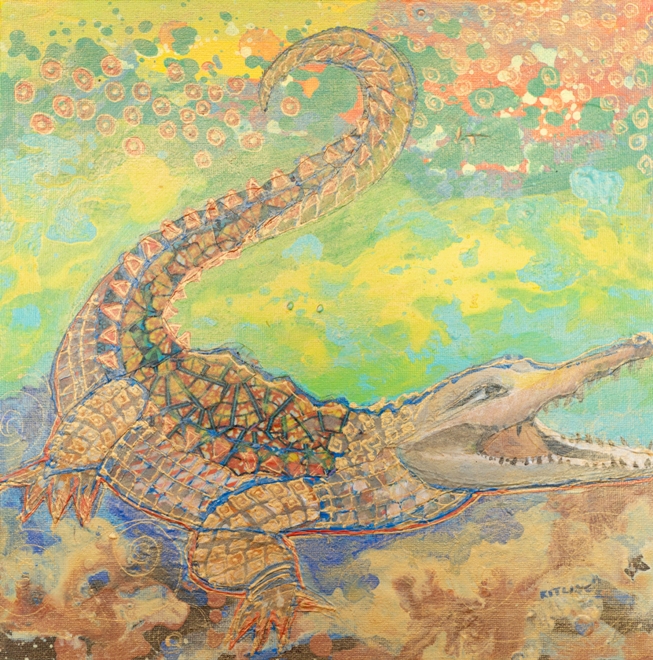
“Ala piri tifi a no lafu”
Costa Rica has crocodiles on the west coast and caimans on the east coast. We went on holiday to Costa Rica with the kids and grandkids. A week’s beach holiday on the west coast included a crocodile tour because we don’t have that in Suriname. Our guide introduced us to several crocodiles that he knew well and had also given names. Hillary Clinton was a female crocodile, and Bin Laden was a very large and old male crocodile. Bin Laden looked about 6 meters long. I looked closely at his face with a very large mouth that seemed to be laughing constantly. He also had those cute, fun eyes. I then thought: “Ala piri tifi a no lafu”, a saying in Sranan Tongo. Translated somewhat literally: “When teeth are shown it is not always because of laughing”.
